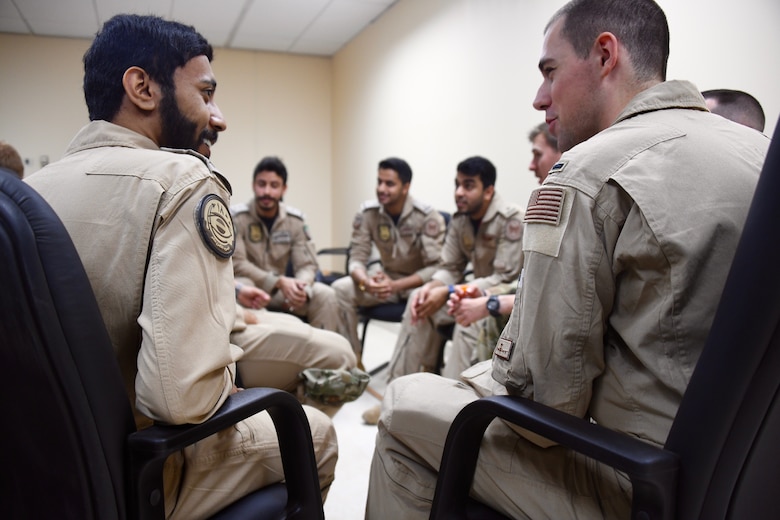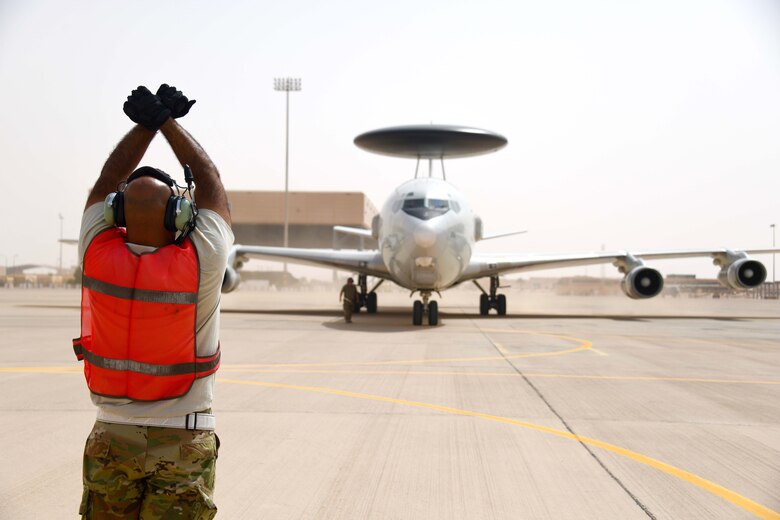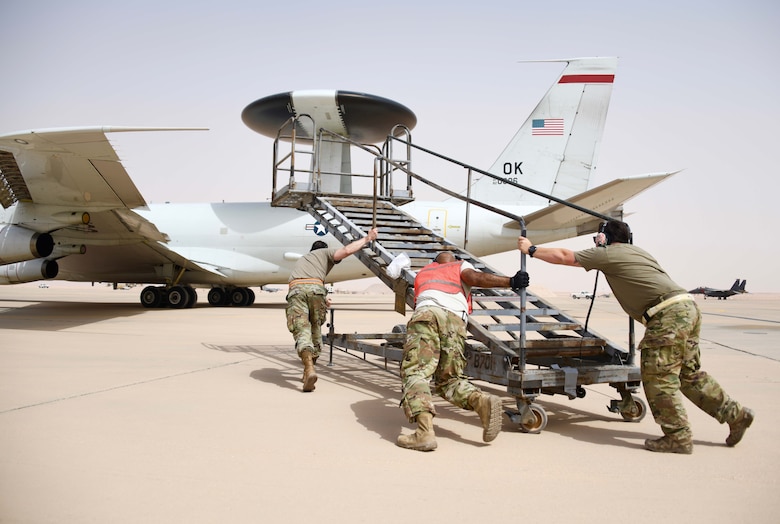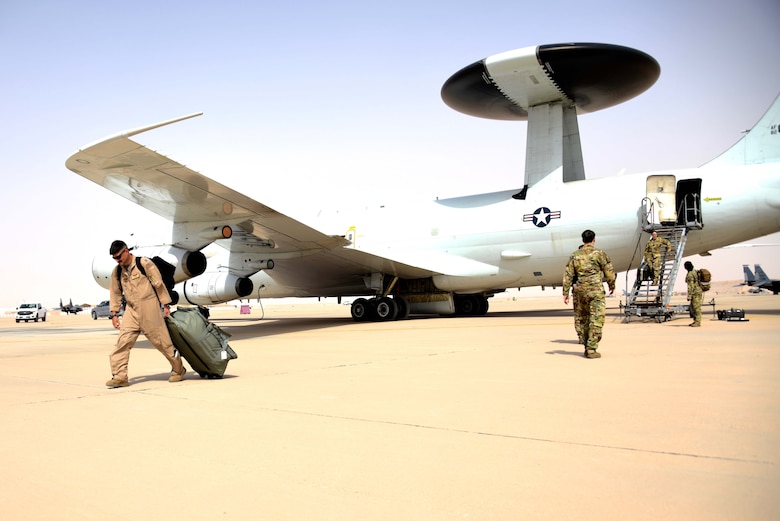In the early 2000s, the E-3 Airborne Warning and Control System (Sentry) was a mainstay at PSAB. Its ability to provide tactical control of all aircraft was vital to successful accomplishment of the operations such as Southern Watch, Enduring Freedom and the start of Iraqi Freedom.
However, since the relocation of the aircraft's mission to Al Dhafra AB in 2007, it hasn't operated from what used to be its expeditionary host installation, PSAB.
"We are practicing our ability to operate away from the squadron's home station for a short period of time," said Lt. Col. Casey Utterback, 968th EAACS detachment director of operations. "The idea is ensuring we have the ability to transition to that austere location and continue to provide the same operations in support of U.S. Central Command's objective."
The aircraft and its aircrew forward deployed to PSAB for the multiday operation in order to test their ability to rapidly deploy to an austere location and continue employing its command and control capabilities in support of U.S. Central Command's mission objectives. This exercise was the first of its kind for the upgraded Sentry.
"This exercise solidifies a proof of concept that's been building for months," said Lt. Col. James Capra, 968th EAACS detachment commander. "To take the E-3G, which has historically not been agile in this way, and turn it into something that can truly be placed anywhere at any time is an amazing milestone. Top that off with partner-nation integration and the operation truly showcased AWACS aircrew operating beyond what anyone thought could be accomplished."
In order to simulate real conditions, the organizers gave the participating units less than 72 hours to plan and execute the move to PSAB.
"Normally, we don't constrain ourselves to such a short timeline," Capra said. "However, we wanted to make this exercise as realistic as possible. Together, with the support here at PSAB, our operations and maintenance team delivered."
"This is the first time most of our members have done an agile combat employment exercise," Utterback added. "We wanted to test our aircrew's ability to receive a movement order and execute the necessary processes to conduct this type of mission. This is a valuable learning experience for them, while also helping us prepare for the possibility of something similar happening in the future."
Upon arrival, they were tasked with participating in various training missions aimed at providing crucial command and control operations enhancing the operational depth in the region.
"Through our movement to PSAB, we were able to practice critical processes that increased our employment capabilities in the region," Capra said. "Our crews were not only able to practice operations in depth, but also integrate defensive missions into this airspace with our coalition partners."
The forward deployment to PSAB also afforded squadron members the opportunity to integrate and collaborate with their Royal Saudi air force AWACS counterparts at the 18th Squadron. During their visit, they were able to tour the RSAF version of the aircraft and break into smaller job-specific groups to increase the interoperability between themselves and a key coalition partner in the region.
"We had an amazing chance to sit down with like operators from the front of the jet all the way to the back of it," Capra said. "It was an opportunity to have a fresh exchange of ideas with our RSAF counterparts. Ultimately, if we can understand each other and improve our interoperability, we will be a greater force to be reckoned with."

U.S. Air Force and Royal Saudi air force E-3 Sentry aircrew members discuss a variety of mission topics during a meet and greet on Prince Sultan Air Base, Kingdom of Saudi Arabia, March 3, 2020. The E-3 and its aircrew are forward deployed to PSAB from Al Dhafra Air Base, United Arab Emirates, as part of an agile combat employment mission meant to test their ability to conduct missions in the region from an austere location. (U.S. Air Force photo by Tech. Sgt. Michael Charles)

Air Force Tech. Sgt. Jacquez Manuel, 380th Expeditionary Maintenance Squadron crew chief directs an E-3 Sentry, on the flightline at Prince Sultan Air Base, Kingdom of Saudi Arabia March 1, 2020. The E-3 forward deployed to PSAB from Al Dhafra Air Base, United Arab Emirates, as part of an agile combat employment mission meant to test the squadron's ability to conduct missions in the region from an austere location. (U.S. Air Force photo by Tech Sgt. Michael Charles)

Airmen assigned to the 380th Expeditionary Maintenance Squadron move aircraft stairs toward an E-3 Sentry on the flightline at Prince Sultan Air Base, Kingdom of Saudi Arabia March 1, 2020. The E-3 forward deployed to PSAB from Al Dhafra Air Base, United Arab Emirates, as part of an agile combat employment mission meant to test the squadron's ability to conduct missions in the region from an austere location. (U.S. Air Force photo by Tech. Sgt. Michael Charles)

Airmen assigned to the 968th Expeditionary Airborne Air Control Squadron exit an E-3 Sentry following an arrival at Prince Sultan Air Base, Kingdom of Saudi Arabia on March 1, 2020. The E-3 forward deployed to PSAB from Al Dhafra Air Base, United Arab Emirates, as part of an agile combat employment mission meant to test their ability to conduct missions in the region from an austere location. (U.S. Air Force photo by Tech. Sgt. Michael Charles)






